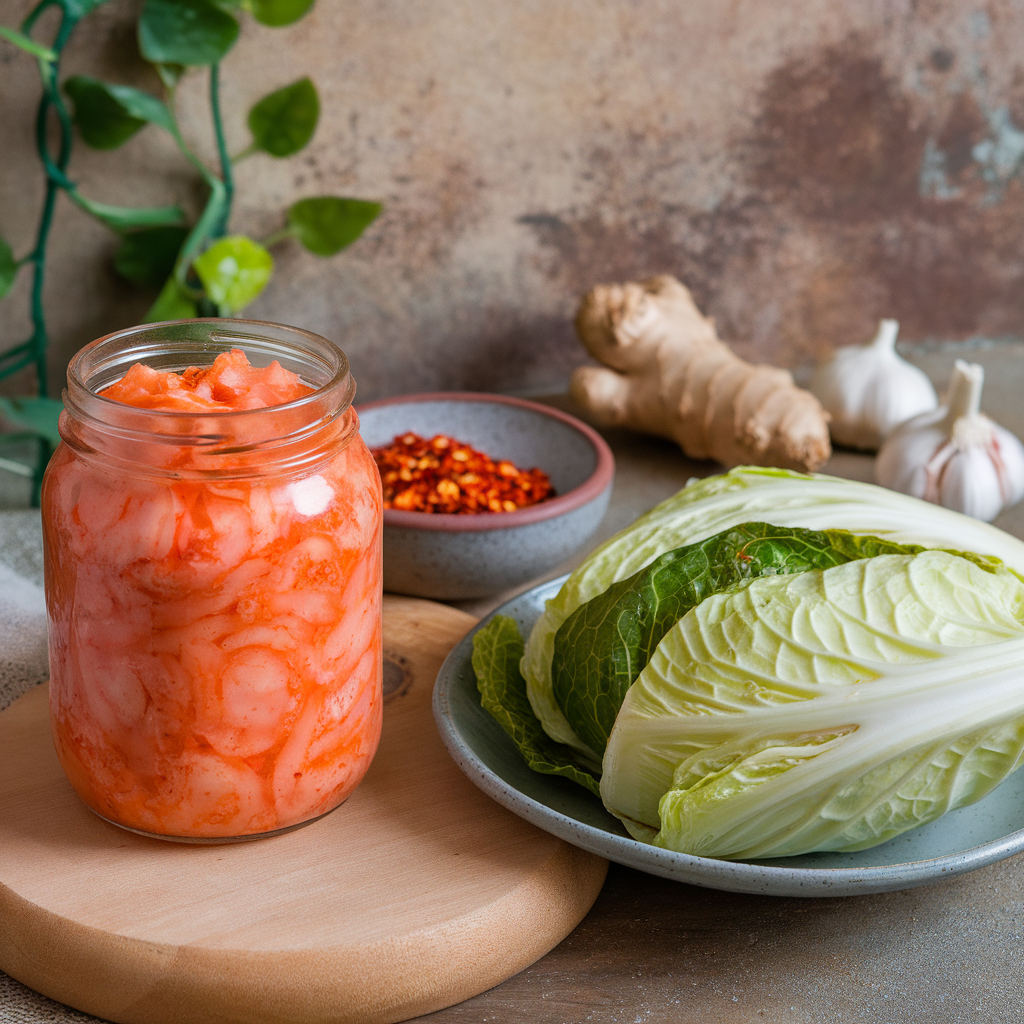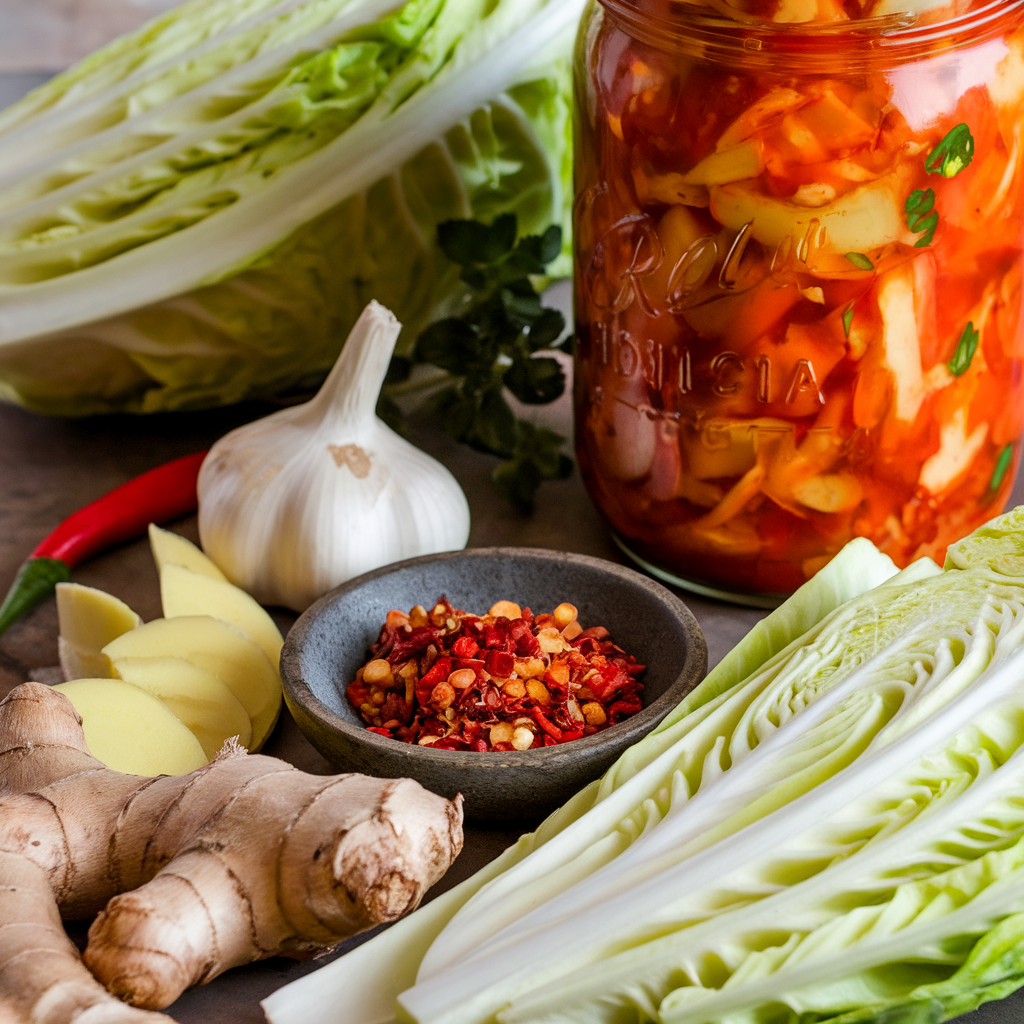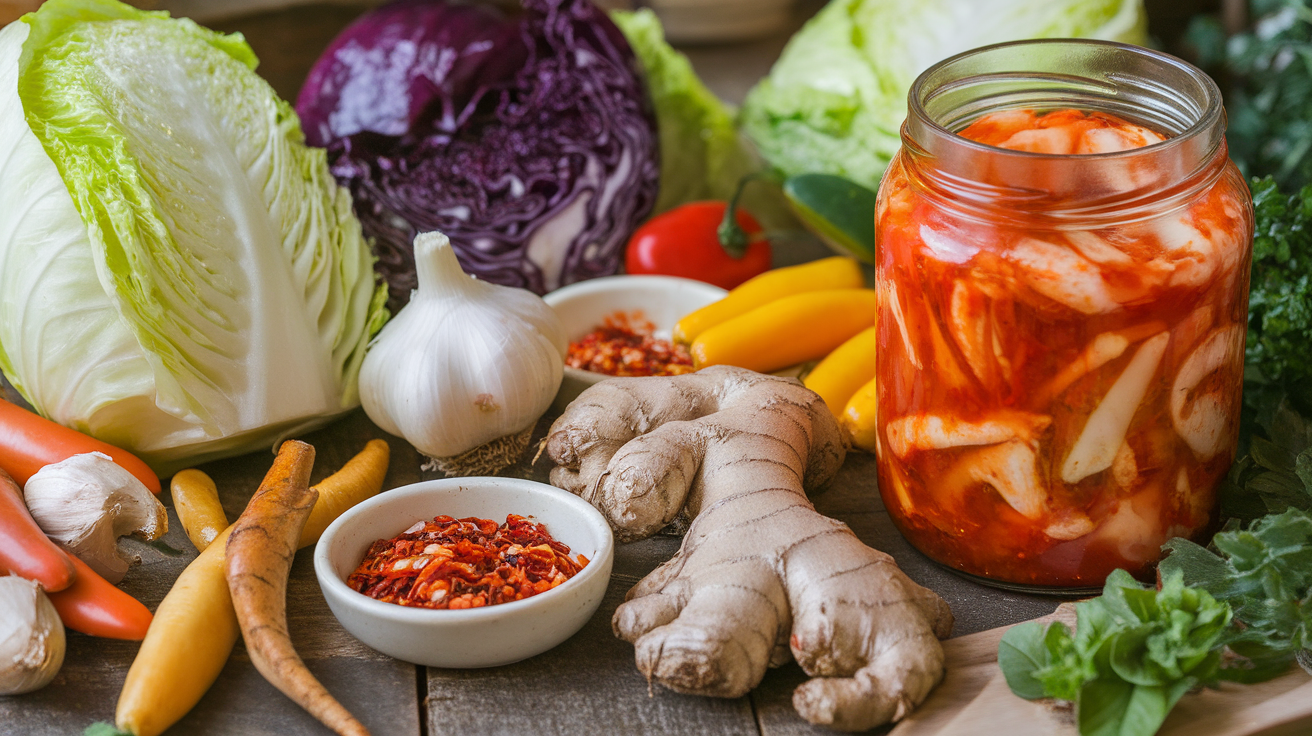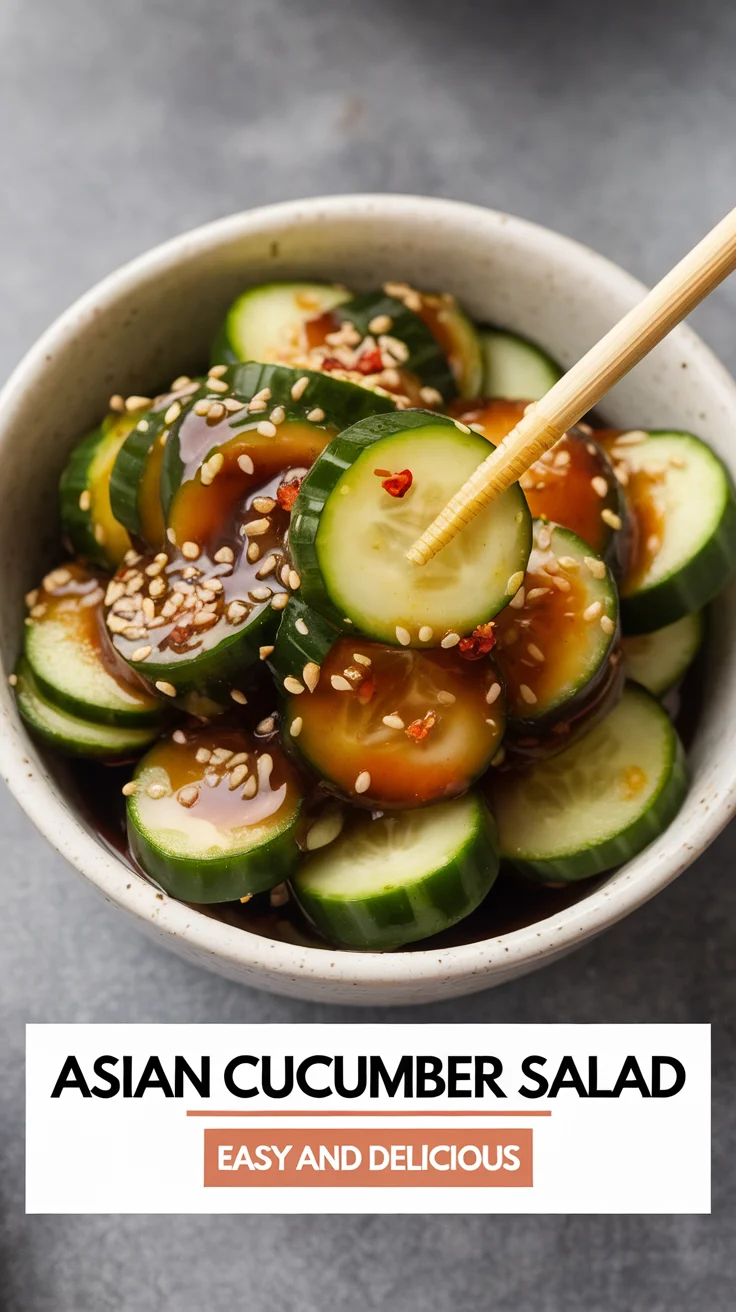Kimchi, the iconic fermented dish from Korea, has taken the world by storm with its rich, spicy, and tangy flavor. Traditionally made with cabbage, radish, and a blend of seasonings, kimchi is an essential component of Korean cuisine. While the original kimchi recipe uses fish sauce and shrimp paste to add depth of flavor, this easy beginner kimchi recipe is a vegan version that is just as delicious and incredibly easy to make at home. Whether you are looking for a new fermentation adventure or trying to embrace plant-based living, this vegan kimchi recipe will quickly become a staple in your kitchen.
What Is Kimchi?
Kimchi is a type of fermented vegetable dish, traditionally made with napa cabbage and seasoned with a combination of chili flakes, garlic, ginger, fish sauce, and other spices. The fermentation process gives kimchi its signature tang and develops probiotics, which are beneficial bacteria for gut health. Though kimchi recipes can vary, it’s generally made by salting the vegetables, rinsing off the excess salt, mixing with a spicy paste, and then fermenting the mixture for several days.
In this vegan version, we’ll skip the fish sauce and focus on plant-based ingredients that provide rich umami and complex flavor profiles. The result? A delicious, healthy, and versatile side dish that can be added to rice, tacos, soups, or sandwiches.
Benefits of Making Homemade Kimchi
Kimchi is much more than just a flavorful side dish. It has an impressive range of health benefits, thanks to its fermentation process. Below, we explore some of the most significant benefits of making your own homemade kimchi:
1. Boosts Gut Health:
Kimchi is packed with probiotics, the beneficial bacteria that promote a healthy gut microbiome. These probiotics help improve digestion, support immunity, and even boost mood. Fermented foods like kimchi are great for keeping your digestive system balanced.
2. Improves Immune Function:
The fermentation process of kimchi increases its vitamin C content, making it an excellent food to strengthen your immune system. Plus, the antioxidants in kimchi help fight off harmful free radicals, contributing to overall health.
3. Rich in Vitamins and Minerals:
Kimchi is made with nutrient-dense vegetables like cabbage, garlic, and ginger, all of which contain essential vitamins and minerals. Vitamin K from cabbage promotes healthy bones, while the antioxidants in garlic and ginger help fight inflammation.
4. Detoxifies the Body:
The fermentation process not only makes kimchi more digestible but also helps in detoxifying the body. Fermented foods can assist with removing toxins from the digestive system and maintaining healthy liver function.
5. Supports Weight Loss:
Because kimchi is low in calories but packed with fiber, it can help keep you full for longer periods, making it a great addition to any weight-loss or maintenance plan. Additionally, studies suggest that the beneficial bacteria in kimchi may play a role in reducing fat storage.

Vegan Kimchi Recipe: The Ingredients
To make this vegan kimchi recipe, you’ll need the following ingredients. The key is to use fresh, high-quality vegetables and make sure you have the right spices to achieve that authentic kimchi flavor.
For the Kimchi Base:
- 1 medium napa cabbage: This will form the base of your kimchi. You’ll want to use napa cabbage because its texture and mild flavor lend themselves well to fermentation.
- 1/4 cup sea salt: This helps draw out moisture from the cabbage and kickstarts the fermentation process. Sea salt is preferred because it’s free from additives and iodine, which can interfere with fermentation.
- 3-4 cups water: You’ll need this to create the brine for soaking the cabbage.
For the Kimchi Paste:
- 1 tablespoon grated ginger: Ginger adds a spicy and aromatic layer to your kimchi.
- 1 tablespoon minced garlic: Garlic provides depth and intensity to the kimchi paste.
- 2 tablespoons gochugaru (Korean red pepper flakes): This is the key ingredient to achieving the signature spiciness and color of kimchi.
- 1 tablespoon soy sauce or tamari (for gluten-free option): This provides an umami flavor, balancing out the spiciness and acidity of the kimchi.
- 1 tablespoon rice vinegar: Adds tanginess to the paste and helps with the fermentation process.
- 1 cuillère à café de sucre: The sugar helps to activate the fermentation.
- 1 medium carrot, julienned: The carrot adds a touch of sweetness and crunch, enhancing the texture of the kimchi.
- 2-3 spring onions, chopped: Spring onions give a mild, sharp flavor to the kimchi.
Tools You’ll Need:
- Large mixing bowl
- Large container or jar for fermenting (glass is best)
- Gloves (optional but recommended to prevent the chili paste from irritating your skin)
- A spoon or spatula for mixing

How to Make Vegan Kimchi at Home
Making homemade kimchi may sound intimidating at first, but it’s surprisingly simple once you break it down into steps. Here’s how to make this vegan kimchi recipe:
Step 1: Preparing the Cabbage
- Cut the Napa cabbage: Begin by cutting the napa cabbage in half lengthwise, then cut each half into 3-4-inch pieces. You want bite-sized pieces that will easily fit into your fermenting jar.
- Salt the cabbage: In a large bowl, sprinkle the cabbage with sea salt. Toss the cabbage to ensure each piece is coated in salt. The salt helps to draw out moisture and softens the cabbage. Allow the cabbage to sit for 1-2 hours, tossing it every 30 minutes or so.
- Rinse the cabbage: After 1-2 hours, rinse the cabbage thoroughly to remove excess salt. You want to avoid making the kimchi too salty, so ensure it’s well rinsed. Drain the cabbage in a colander and set it aside to let the excess water drip off.
Step 2: Making the Kimchi Paste
- Prepare the kimchi paste: While the cabbage is salting, it’s time to make the kimchi paste. In a bowl, combine the grated ginger, minced garlic, gochugaru (Korean red pepper flakes), soy sauce, rice vinegar, and sugar. Stir to combine into a smooth paste.
- Add the vegetables: Once the paste is mixed, add the julienned carrots and chopped spring onions. These vegetables add texture and additional flavor to the kimchi, and they’ll absorb the spicy paste as it ferments.
Step 3: Mixing the Cabbage and Paste
- Combine the cabbage and paste: Once your cabbage is drained and the paste is ready, it’s time to mix them together. Add the cabbage to the bowl with the paste and use your hands (wear gloves to protect your skin from the chili) to massage the paste into the cabbage. Make sure every piece of cabbage is thoroughly coated with the kimchi paste. The more evenly you distribute the paste, the better your kimchi will turn out.
Step 4: Fermenting the Kimchi
- Pack the kimchi into a jar: Transfer the kimchi into a clean glass jar or fermentation container. Pack it tightly, pressing the mixture down to remove air bubbles and prevent spoilage. Leave about an inch of space at the top of the jar to allow the kimchi to expand as it ferments.
- Seal and store: Seal the jar with a tight-fitting lid and leave it at room temperature for 1-3 days to ferment. The exact time will depend on the ambient temperature and how tangy you want your kimchi to be. During fermentation, the flavors will develop, and the cabbage will soften.
- Check daily: You may want to check the kimchi daily. If the kimchi begins to bubble, it’s a good sign that fermentation is taking place. If you see any liquid spilling over, you can open the jar slightly to release gas, or top up the jar with more cabbage to keep it submerged in the brine.
Step 5: Storing Your Homemade Kimchi
Once your kimchi has reached the desired level of fermentation, move it to the refrigerator. The cold temperature will slow down the fermentation process, and your kimchi will last for up to 3 weeks or longer. Over time, the flavor will continue to develop, and the kimchi will become more sour.

Tips for Making the Best Vegan Kimchi
- Use a high-quality gochugaru: The type of Korean red pepper flakes you use can make a huge difference in the flavor of your kimchi. Look for gochugaru, as it’s milder and more aromatic than standard chili flakes. Gochugaru also adds a beautiful red color to the kimchi.
- Adjust the spice level: If you’re not a fan of spicy food, feel free to reduce the amount of gochugaru. Alternatively, if you love heat, you can increase it. You can also experiment with different types of chili flakes to adjust the flavor and heat level.
- Don’t skip the salt: Salt is an essential part of the fermentation process. It helps extract water from the cabbage and creates an environment conducive to beneficial bacteria growth. Without enough salt, your kimchi may not ferment properly.
- Ferment in a cool, dry place: Kimchi should be fermented at room temperature, but avoid placing it in direct sunlight or near a heat source. Fermentation happens best in a cool, dry place, away from temperature fluctuations.
- Be patient: Fermentation takes time. Don’t rush the process, and give your kimchi the time it needs to develop flavor. The longer you let it ferment, the tangier it will get.
Vegan Kimchi: A Versatile Ingredient
Once you’ve made your vegan kimchi, the possibilities are endless! Use it as a side dish, on top of rice, in tacos, as a sandwich filling, or even stirred into noodles. Fermented vegetables like kimchi are great for digestion, making this a nutritious and flavorful addition to your meals.
- Kimchi Fried Rice: Take your leftover rice and toss it in a pan with a bit of oil, a spoonful of vegan kimchi, and a sprinkle of soy sauce for an easy and satisfying meal.
- Kimchi Tacos: Add a dollop of kimchi to your taco for an exciting and spicy twist. It pairs well with any protein, whether plant-based or traditional.
- Kimchi Soup: Create a warm, savory dish by simmering kimchi in vegetable broth with tofu or mushrooms. The result is a comforting and flavorful meal.
Conclusion: Embrace the World of Fermented Veggies
Making your own homemade kimchi is easier than you might think, and this vegan kimchi recipe will introduce you to the world of fermented veggies. Not only is it a fantastic way to embrace Korean cuisine, but it also offers all the health benefits of fermented foods—improved gut health, probiotics, and an explosion of flavor in every bite.
Whether you’re a seasoned pro or a fermentation newbie, this vegan kimchi recipe is a perfect starting point. With just a few ingredients and a bit of patience, you’ll be able to enjoy your very own homemade, fermented kimchi for weeks to come. So roll up your sleeves, put on your gloves, and start making your own batch today. Happy fermenting!


